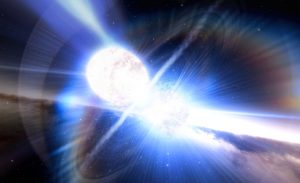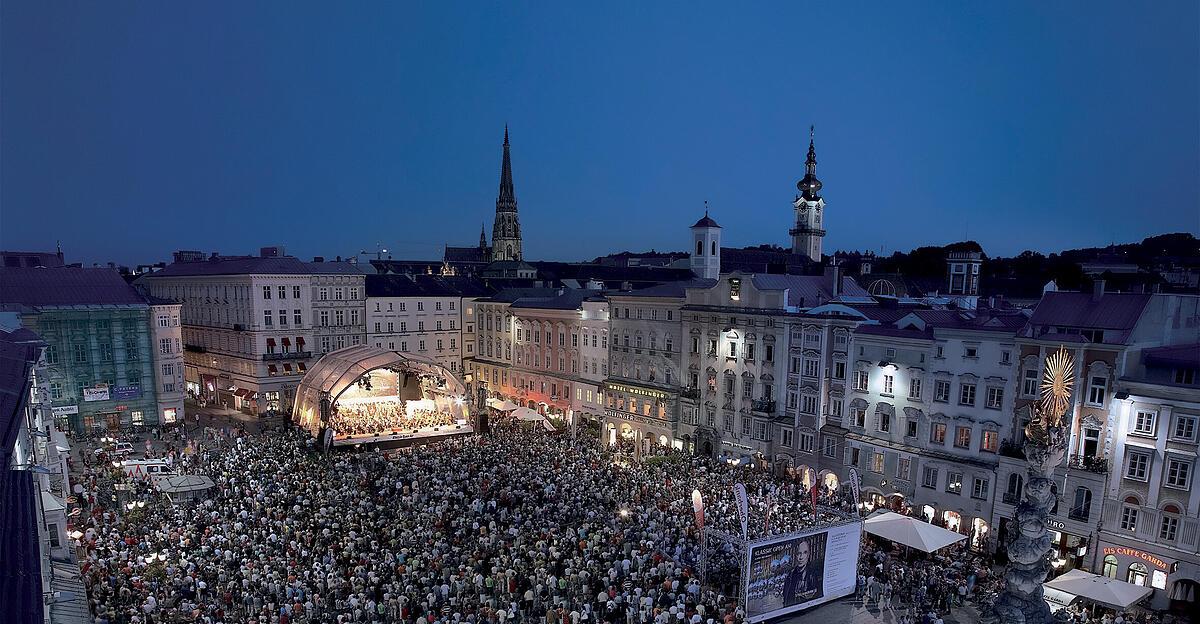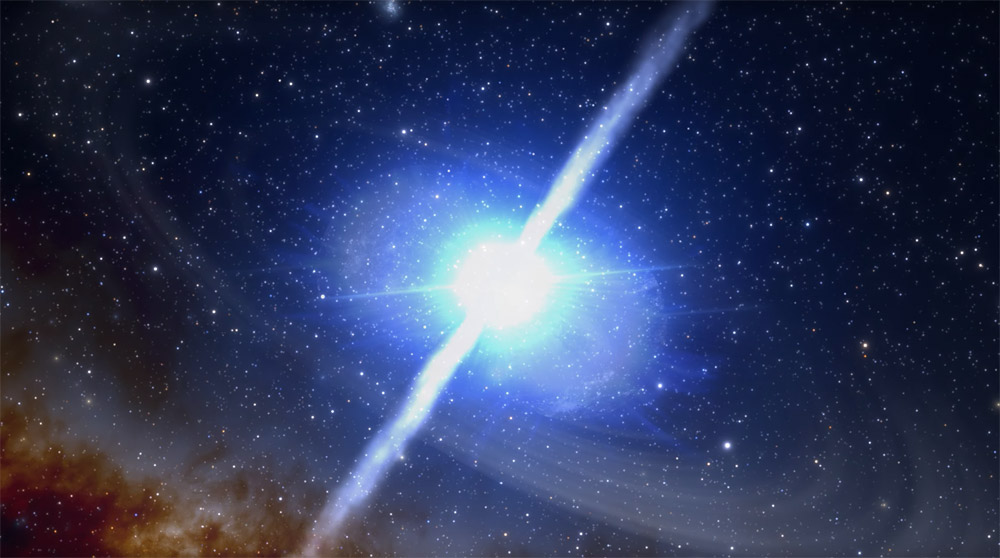Mysterious origin: Astronomers have observed a cosmic ray glow that defies conventional explanation. Because a gamma ray burst showed similar properties to a kilonova – an explosion caused by the collision of neutron stars. However, the intense gamma-ray burst was far too long for such an event. However, the event also didn’t fit with the supernova and long gamma-ray bursts that are typical of it, the researchers report in “Nature.” This raises questions about the cause of this cosmic explosion.
gamma ray bursts (GRB) is among the brightest and most active phenomena in the universe. Its high-energy radiation reaches billions of light-years. According to current theory, there are two categories of these massive explosions: long gamma-ray bursts last more than two seconds and become mostly from a supernova huge stars. On the other hand, short gamma-ray bursts lasting less than 2 seconds are supposed to be caused by Neutron star merger. So much for the classic picture.
But astronomers have since noticed a few gamma-ray bursts that don’t fit the simple two-degree scheme. in 2020 discoverer For example, they saw a short explosion, but its afterglow showed the characteristics of a supernova. In 2006, on the other hand, there was a long-duration gamma-ray burst that left no sign of a starburst.
A long gamma ray burst…
Now astronomers have identified another of these puzzling “outliers”. GRB 211211A was detected on December 11, 2021 by several gamma ray observatories, including the NASA Fermi and Swift space telescopes. This event’s intense gamma-ray emission lasted 55 seconds, making it at first glance clearly representative of long gamma-ray bursts.
Within minutes, telescopes at other wavelengths of electromagnetic radiation were also targeting the source of these gamma rays, catching afterglows from X-rays to radio. These observations showed that the source of this radiation was in a galaxy about a billion light-years away. “This makes GRB 211211A one of the closest long-range gamma-ray bursts ever observed,” report Eleonora Troja of the University of Rome and colleagues.
…but “inappropriate” characteristics
But when Troy’s team and three other groups of astronomers began analyzing the event’s light curves, they found something surprising: Despite its length, GRB 211211A didn’t fit the usual appearance of a long gamma-ray burst. “This event is unlike any long-distance gamma-ray burst seen before,” explains Jillian Rastingad of Northwestern University in the US.
Instead, despite its length, this cosmic burst showed remarkable similarities to short gamma-ray bursts: similar to these, the origin of the radiation was not at the star-dense center of the galaxy, marked by active star formation, but at the outer edge – where it became Most massive stars have long been neutron stars and black holes.
between the usual categories
Also strange: in the optical images of this region there was no trace of a supernova or a massive progenitor star, as the astronomers reported. “The origin of the GRB and the properties of its host galaxy thus provide indirect evidence that this event must have an origin other than a collapsed massive star,” say Troja and colleagues.

Additionally, in the afterglow of the eruption, the research team detected an apparent excess of near-infrared light with respect to visible light. However, this is typical of a kilonova – an explosion caused by the collision of two neutron stars. This is because the heavy elements released by the kilonova absorb parts of the visible light and thus create the disequilibrium.
Thus GRB 211211A is a real special case: the burst exhibits many features of a short gamma-ray burst, but at the same time is too long in time to have come from two colliding neutron stars. According to the popular assumption, these elements contain too little mass and material to produce long-lasting outbreaks.
Kilonova, magnetic collision or hybrid?
But what caused a hybrid gamma ray burst? Astronomers do not agree on this question. Troy and Rastenjad’s team independently concluded that GRB 211211A must be a kilonova – the merger of two neutron stars, or a neutron star and a black hole. It was possible to create a particularly powerful jet of highly accelerated particles, which explains the long-term radiation.
On the other hand, a team led by Bin-Bin Zhang of Nanjing University in China, sees the collision of a strongly magnetized neutron star with a white dwarf as the cause. This merger will tear apart the lighter white dwarf and create a large accretion disk of rapidly spinning plasma. Astronomers say that this material, combined with the magnetar’s strong magnetic fields, could explain why gamma rays last for so long. Other researchers also consider the involvement of such a protomagnet possible.
Despite the long duration, was a neutron star collision the cause?© NOIRLab
Gravitational waves can bring more clarity
So far, however, none of these hypotheses can be confirmed or disproved – also due to the lack of an important tool: if GRB 211211A did indeed return from the merger of two neutron stars or similarly compact objects, this must have triggered gravitational waves. However, none of the Earth’s gravitational wave detectors were operational at the time of the event. So it remains unknown if the volcanic eruption shook space-time.
Astronomers are only now hoping that LIGO, Virgo and Co will be ready for the next eruption of this kind of puzzle. In any case, the gravitational wave detectors, which have now been upgraded to greater sensitivity, should be sensitive enough to detect signals from dozens of neutron star collisions in their next lifetime from 2023. (Nature, 2022; doi: 10.1038/s41586-022-05327-3; doi: 10.1038/s41586-022-05390-w; doi: 10.1038/s41586-022-05403-8; doi: 10.1038/s41550-022-01819-4)
Source: Nature, Northwestern University, NOIRLab

“Total coffee aficionado. Travel buff. Music ninja. Bacon nerd. Beeraholic.”






More Stories
Experts informed patients about the topic of cervical cancer
'Gaia BH3': A massive black hole lurks here – a falling star that led to the discovery
Comparing the size of the sun and the earth